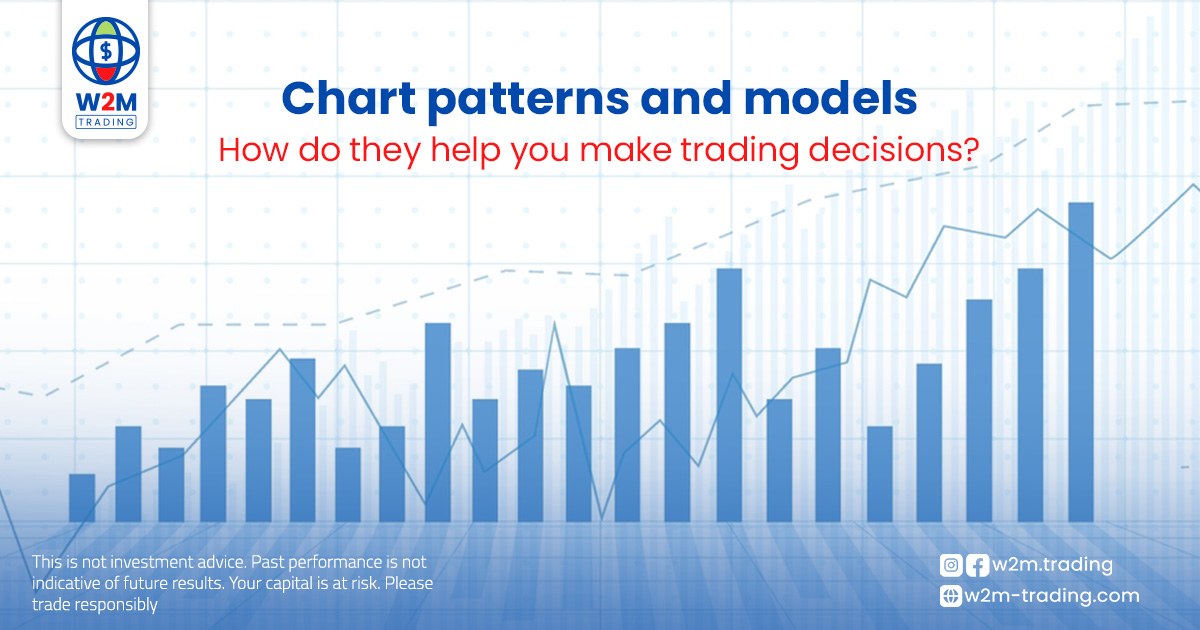- Attractive Education
- Beginner to Advance
- Flexible Timing

When it comes to trading in financial markets, one of the most powerful tools traders use is chart patterns. These patterns provide valuable visual signals that help traders identify future market directions—whether bullish or bearish. By understanding these patterns, you can make more accurate trading decisions and manage your financial portfolio efficiently.
Chart patterns are formations that appear on financial market charts when price moves in a certain way over time. These formations indicate certain probabilities for future price movements based on the market’s past behavior.
They are used to determine future market directions—whether the market is heading upward (bullish) or downward (bearish). Traders rely on analyzing these patterns to determine the best times to enter or exit the market.
Double Bottom:
This is a bullish reversal pattern that signals a turning point. It occurs when the market hits a low point twice, each time failing to drop lower.
Inverse Head and Shoulders:
A reliable reversal pattern indicating a shift from a downtrend to an uptrend. It forms when the price is in a downtrend and then creates three troughs: a lower middle trough (head) and two higher ones on either side (shoulders).
Rising Wedge:
This pattern suggests a potential reversal from an uptrend to a downtrend. When the market is trending upward, this wedge may indicate an approaching end to the trend.
Double Top:
Indicates a reversal from an uptrend to a downtrend. It appears when the market rises to the same level twice and fails to break through, followed by a decline.
Head and Shoulders:
A bearish reversal pattern that forms after a strong upward move. It features a higher peak in the middle (head) flanked by two lower peaks (shoulders), suggesting an end to the bullish trend.
Falling Wedge:
This pattern forms during a downtrend and indicates a possible reversal to the upside. It appears as the price gradually decreases, signaling a potential upward breakout.
Trading doesn’t rely solely on pattern analysis; it’s important to combine chart patterns with other tools such as technical indicators and fundamental analysis. This integration enhances the power of your strategy.
Identifying Entry and Exit Points:
When patterns appear on a chart, you can use them to determine precise entry and exit points. For example, if you spot a double top pattern, you might enter a short trade once the pattern is confirmed.
Determining Support and Resistance Levels:
Patterns help traders identify support and resistance areas, which are crucial for deciding when to close a trade.
Using Volume:
Volume is a helpful tool when analyzing chart patterns. A pattern accompanied by high trading volume may signal the strength of a trend or the likelihood of a reversal.
Easy to Understand:
Chart patterns are visually represented, making them easy to interpret for traders of all levels.
Predictive Accuracy:
When properly analyzed, chart patterns can help forecast upcoming market directions with accuracy.
Versatility:
Chart patterns can be used in almost any market—forex, stocks, commodities, or cryptocurrencies. They are highly versatile tools.
Despite being powerful tools, chart patterns come with some challenges:
False Signals:
Some patterns may not result in the expected movements. At times, a pattern may be just “noise” in the market, leading to inaccurate outcomes.
Learning Curve:
Reading and analyzing charts takes practice and experience. Over time, traders become more skilled at recognizing and effectively using patterns.
Timeframe Dependence:
Some patterns may work well on short-term charts but not on longer timeframes. Choosing the appropriate timeframe for each pattern is crucial.
This site is protected by reCAPTCHA and the Google
Privacy Policy and
Terms of Service apply.